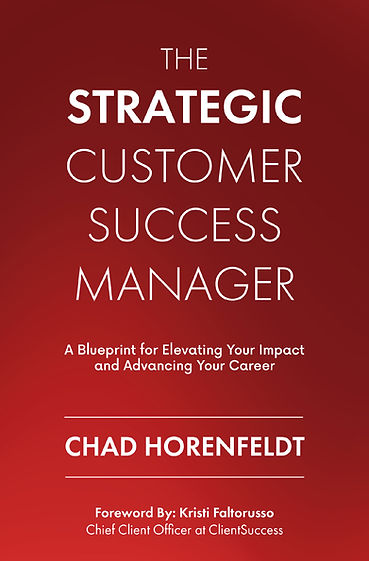Driving customer change with motivational interviewing
- Chad Horenfeldt
- Aug 3
- 3 min read
At some point, every Customer Success professional has probably wanted to say something like this to a client:
“It’s your fault you didn’t get value from our product. You skipped the training, didn’t fully engage, and gave up too soon.”
Let’s be clear—this kind of confrontation won’t get you very far. Blame rarely drives behavior change. There’s a better way to engage clients and help them take ownership of their success: it’s called motivational interviewing (MI).
Motivational interviewing is a style of communication that emerged in the 1980s for clinicians to help people with substance abuse disorders. Therapists used to blame their patients for their addictions and provide high-handed orders as a way of treating them. You can take a guess as to how successful that was. MI takes a different approach, and after learning more about it, I felt that it’s directly applicable to customer success and sales. I will provide an overview of what motivational interviewing is and then explore its various aspects.
What is Motivational Interviewing?
Motivational Interviewing is about drawing out your customer’s motivation (or lack thereof) to pursue a necessary change or solution. For example, it can involve getting your customer to take a training course or a more significant initiative, such as adapting to a completely new technology. You are digging down deeper into what makes your customer tick and who they really are. It’s a good tool when you need to push your customer out of their comfort zone or to do something they are reluctant to do.
What Motivational Interviewing Isn’t
MI isn’t about getting customers to see things from your perspective. It’s about seeing things from their perspective. It’s about putting their needs before your own. It isn’t about giving your clients advice or telling them what to do. That can cause them to shut down. It’s about finding their motivation so they are more open to change and empowering them to take action on their own.

Four Objectives of Motivational Interviewing
There are four objectives that you should be striving for when using motivational interviewing with your customers:
Bond. You want to build rapport with your customers by establishing a trusted and respectful relationship.
Empathize. You need to actively listen and appreciate the situation from your customers’ perspective to understand their motivations. This is about walking a thousand miles in their shoes.
Empower. Give your customers the confidence and hope to make the necessary change. Never take away their autonomy by telling them what to do.
Commit. Get your customers to commit to a plan and take the first step
Three Parts of Motivational Interviewing
Motivational interviewing isn’t a simple concept. One of the failure points of MI is the lack of training for therapists to perform it properly. To make this easier for customer success and sales professionals, you can break this down into three main parts:
I: Build rapport, establish trust and start to uncover the issues
II: Assess their motivation to work towards a solution
III: Get them to commit and create a plan for change
To learn more about how to apply motivational interviewing to customer success, read through section IV of my book, The Strategic Customer Success Manager.
Keep this in mind: Refrain from telling your customers what to do until you have established a trusted relationship. This will save you a lot of headaches and failed attempts! If your customer is stuck and isn't sure how to proceed, jump in, but use social proof, such as a customer story, to guide your customer.







Comments